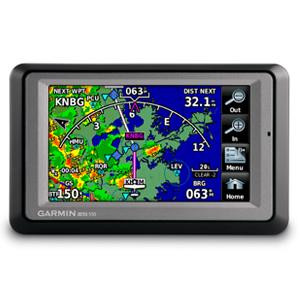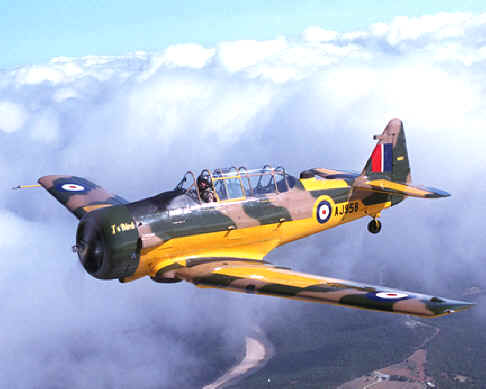As usual, an event you've been looking forward to for months just seems to pop up on the horizon before you know it. I've been burying my head in the stack of books studying for my Certificated Flight Instructor rating and in the meantime the Air Race Classic has crept up when I wasn't looking.

As a background (as if I haven't talked about it enough before), the Air Race Classic is is a nonprofit 501(c)(3) organization dedicated to:
- Encouraging and educating current and future women pilots
- Increasing public awareness of general aviation
- Demonstrating women's roles in aviation
- Presenting and promoting the tradition of pioneering women in aviation.
As you can see, there's a lot of synergy with the Girls With Wings mission!
 |
| Heather and Lynda in 2009 |
This year's race covers 2365.40nm in 11 legs and visits 10 states, all in four days (other activities add a few days on either side. I raced it two years ago with a young woman from Australia, Heather Ford, and had a wonderful time (we didn't win, but we had fun!). I wrote a
series of blog entries on it. I haven't had the opportunity to again race personally, but I've been helping to promote it ever since. I think it's a wonderful event and too few people are aware of it. Heck, we even had air traffic controllers asking us why there were so many VFR targets (airplanes) flying all to the same airport. We had to tell them about the race while they were giving us the NOTAM (Notice to Airmen) about it!
 |
| Victoria and Dianna departing KPKV for KIOW. |
There is a team in this year's race who is generously promoting Girls With Wings:
The Racing Aces. I have spoken of Dianna Stanger, the owner of the Aviat Husky A-19, who's flying with Victoria Holt, her usual co-pilot on her Premier Jet. I've
blogged about Dianna before, she's the woman making it possible to finally wrap up my CFI here at her flight school in Port Lavaca, TX. Both she and Victoria are confident they will make a great showing in their first attempt at the Air Race Classic.
As Dianna says on their
website: "Flying has truly made me a different person. There is a certain amount of aggressive behavior, attitude and need to share the love side of it that has become a new facet of my personality. Clear air, clear head and a great ride can’t be beat on any day when you are a pilot and I am so very thankful that I am one of the very lucky ones that get to enjoy it." Not only are they co-pilots, they are also friends, as reflected in Victoria's statement: "I’ve been having “the time of my life” as a professional pilot for nearly 20 years now. There have been times when peanut butter and jelly was all I could afford and times when I have cried because I was so cold and tired but I have not one regret!"
And not only are they racing for themselves, they're racing to raise funds for Girls With Wings. I am so honored that they should do so and in addition to studying for my CFI and keeping up with GWW while on the road, have been helping them get prepared for the race. In all honesty though, they have a powerhouse in their corner already that goes by the name Jasmine Gordon. She's been recruiting their many sponsors, generating publicity buzz, building a newly designed website and integrating the Spot Tracker feed that will allow folks to follow the Racing Aces as they travel cross country on
this page of their website. It will also be on the Girls With Wings
homepage.
Jasmine has also been helping promote GWW in the local area and has set up a few presentations for me here at the Port Lavaca (Calhoun County) airport - as has Beckey, from the Victoria Airport flight school. This is not a new thing here, though. Dianna has been sponsoring events for kids long before we heard of each other - starting when she bought a GWW tshirt to wear at one of her events, which says, "It's not how tall you are, it's how high you fly!" from the
Girls With Wings Pilot Shop. She is also a
role model on the GWW site. As a result of this wonderful relationship and the support shown by Dianna and Jasmine, I am about to depart on my latest adventure!
Jasmine and I are leaving on Monday for our own cross country trip. We're flying from here in Texas to take video of the racers departing the Iowa City airport and then we're going on to Jamestown, ND, to do a couple of GWW presentations to local residents so they can be aware of the significance contributions of women in aviation. The next day we're on to Rawlings, WY, to do the same. Then we'll be departing there to get ahead of all of the racers so we can video their arrivals in Mobile, AL. Yeah, yeah, you say, Lynda, you've been flying around the country (and around the country) for years. Well, not in a Cessna 182. And not single pilot. And not VFR (visual flight rules). [Insert fingernail biting noise here.]

Of course I am capable of doing this, but I am just taking longer than a pilot who is used to this type of planning might. I will be trying to blog along the way on our trip, but I know it's going to be a busy one. I mean, think about it. There's no dispatch to call to ask where my release is. I have to do the flight planning
myself! It's summer, so you know there are going to be storms (so thanks to Rod Rakic, of
myTransponder who lent me his Garmin Aera to use enroute). We're on a tight schedule, so no sitting on the ground waiting for them to pass.
And I'm going to be flying in the mountains - where all those tragic stories of pilots underestimating the effect of density altitude take place. And though I'll sit in the left seat and teach Jasmine along the way (what? it's going to be like a 30 hour trip - that's almost to private pilot level!), it's all on me. No Captain or First Officer to practice that Crew Coordination concept. But there's no doubt I will always practice safety first. There's no good reason to break an airplane or my neck. Or Jasmine's, for that matter.

And upon my return, finally, wrapping up the CFI. I hope to study along the way, but another GWW
role model, Theresa, is helping me by giving me practice oral exams. I am really grateful also for her donation of her instructor services. She's catching me up on all that general aviation policy and procedure I've missed out on as a military and airline pilot. And once I pass that CFI checkride I can move on to the next hurdle. EAA AirVenture, Oshkosh. The big Girls With Wings booth. Woo-hoo!

 "The North American T-6 Texan was known as "the pilot maker" because of its important role in preparing pilots for combat. Derived from the 1935 North American NA-16 prototype, a cantilever low-wing monoplane, the Texan filled the need for a basic combat trainer during WW II and beyond." Since I made it to KBFM first, we taxied off the runway and turned on the parallel taxiway just as we heard the T-6s request and approval for it from tower. Don't know why and don't care, but the Texan did a low pass blowing smoke down the runway. Love it.
"The North American T-6 Texan was known as "the pilot maker" because of its important role in preparing pilots for combat. Derived from the 1935 North American NA-16 prototype, a cantilever low-wing monoplane, the Texan filled the need for a basic combat trainer during WW II and beyond." Since I made it to KBFM first, we taxied off the runway and turned on the parallel taxiway just as we heard the T-6s request and approval for it from tower. Don't know why and don't care, but the Texan did a low pass blowing smoke down the runway. Love it.


























